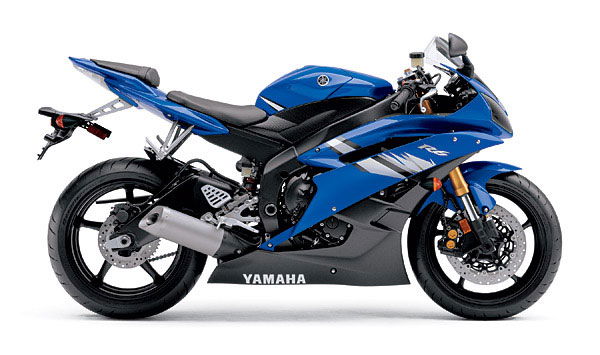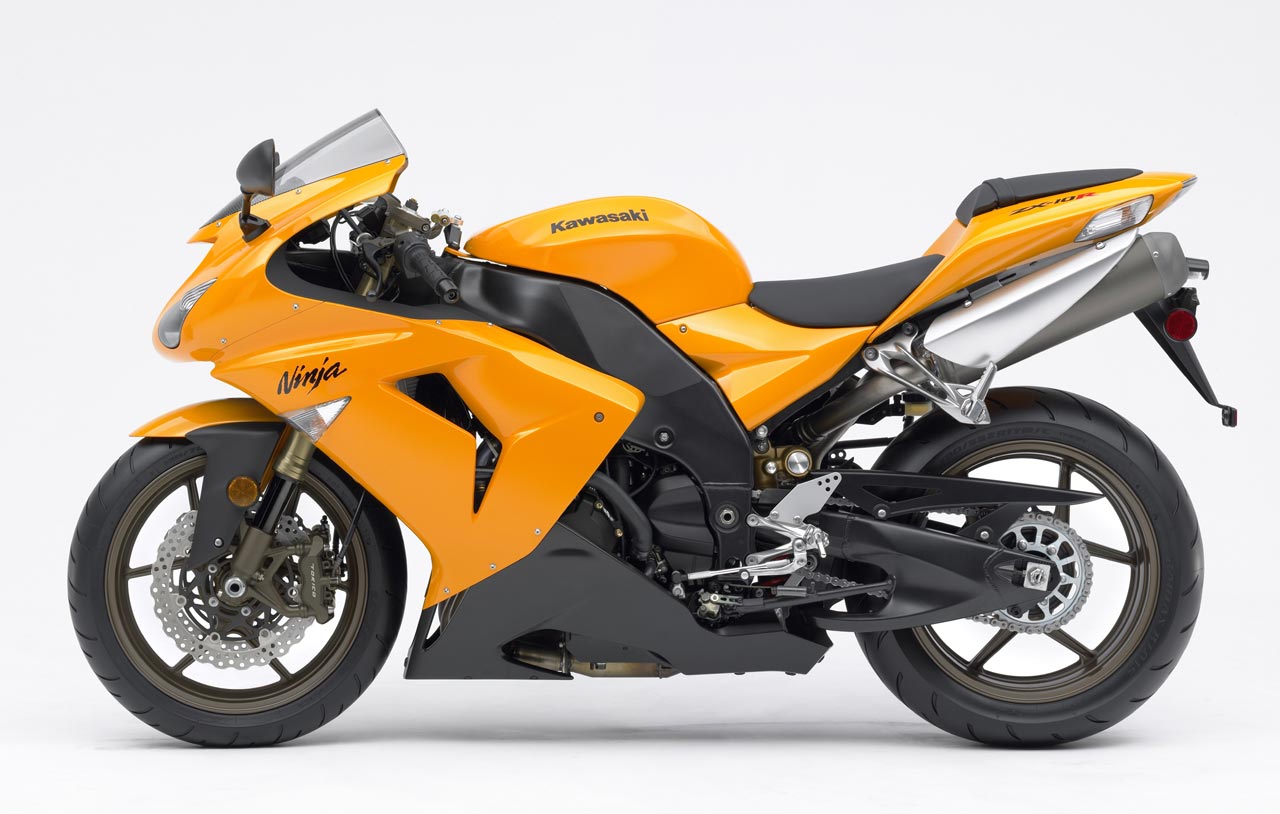2006 Fireblade CBR1000RR review
The 2006 Fireblade CBR1000RR is even more well-mannered than its predecessor and all the more rideable because of it, a very good thing when you've got so much power and speed on tap.


The hallmark of all of Honda's bikes has always been that they're very easy to ride and live with, and its 2006 Fireblade CBR1000RR superbike is no exception.
The new bike is even more polished than last year's example. And though none of the numerous changes made to it aren't especially radical, they do add up to make the new Blade even more of a complete package. Only time will tell whether the Honda will be able to ultimately match or beat its superbike opposition. But I'd stick my neck out and say that the vast majority of riders will be able to get more from the Blade than the others - simply because it's so useable and friendly.
When the first CBR1000RR Fireblade was launched two years ago it seemed almost perfect. Its DNA was a combination of original FireBlade (that's big 'B' in Blade; only with the underseat pipe did it become a small 'b') and the MotoGP RC211V, so it was fast and gorgeous. It also had a good chassis and suspension plus that trick electronic steering damper, so even your Grandad could enjoy a Sunday morning thrash in safety without the fear of spilling Werther's Originals all over the road.
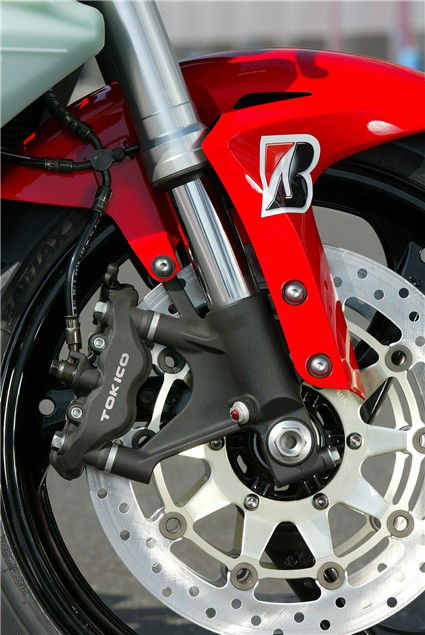
So why fix it if it's not broken? Honda says Fireblade owners complained of a lack of midrange grunt, losing out to the competition accelerating from 70mph and above. They also felt the steering was a tad lazy and needed sharpening up to improve direction changes and corner exit. Fair enough, but personally I think Honda is hungry for success in Superstock racing and decided it was time to hone its weapon for the new season.
The new bike doesn't look too much different, retaining a very similar overall shape to the current bike. It might have been slimmed down and sharpened here and there, but it still has the current Blade's visual identity as we know it. Changes to the engine and chassis are just as subtle.
Weight paring on stuff like the cams, radiator and engine covers, along with a lighter exhaust, and ECU help account for the claimed 3kg saving overall on dry weight. And changes to the intake and exhaust ports, combustion chamber shape, and two, rather than a single inlet valve spring, contribute to the claimed boost in midrange power and a 550rpm-higher red-line.
With a very slightly steeper head angle, and marginally shorter trail and swingarm lengths reducing wheelbase by 10mm, the Honda engineers told us to expect a sharper turning motorcycle. And while they were at it, they also pointed out a stiffer crank and redesigned gearbox for greater reliability, some bigger brake discs for extra stopping power, and lower gearing to make acceleration a bit brisker. None of those changes suggest a very different bike to the current model. But believe me, the new Blade is noticeably improved.
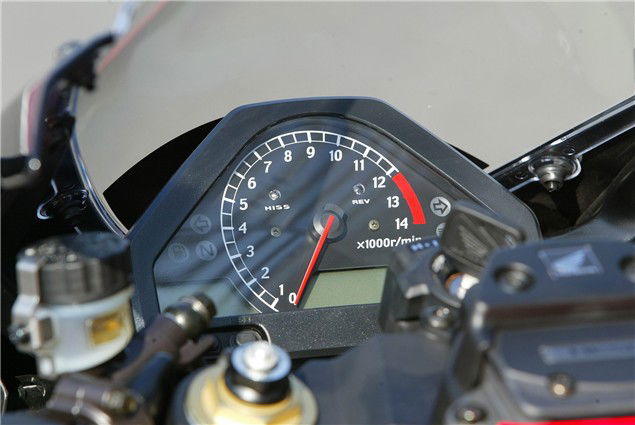
Honda has made many minor changes to the '06 Blade, but simply lowering the gearing and shortening the wheelbase have made the biggest differences. Okay, the new shape intake ports and bigger exhaust ports help the remapped ECU deliver efficient fueling, and the engine now revs 550rpm higher to12,200rpm with dual exhaust valve springs to deal with the increase. But, despite all these internal changes, plus a slightly higher compression ratio, the overall horsepower figure remains the same at 149bhp. Could it be a case of Euro3 creeping in and forcing changes to meet regulations? I reckon so, but at least Honda hasn't lost any power.
With any sportsbike it isn't just power that counts, it's weight as well. Like the fat kid at school, he may produce a lot of power, but there's a lot of pies to shift. Honda has further improved the Blade's power-to-weight ratio by shedding three kilos, mainly from a lighter seat rail, silencer, smaller radiator and camshafts, but also from a number of small weight saving features such as the aluminum pre-load adjuster. Okay, I know what you're thinking... But as any weight watcher will tell you, every gram counts.
From a distance the new model looks very similar to the one it replaces, but get up close and you'll notice a skinnier, more aggressive nose and side cowlings. Also the exposed right-hand side clutch casing is a very nice touch. At the rear the twin-exit silencer is rounder and tidier, and the swingarm is now black to match the frame. The controls and dash remain the same, apart from the tacho redline moving to 12,200. In my opinion the graphite black or iron nail silver look much more interesting than the 'winning red' design. I told the Honda people this but they still sent me out on the red bike...
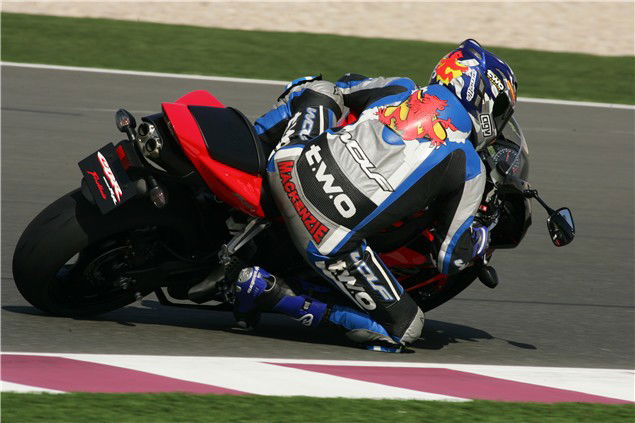
The Losail circuit in Doha, Qatar, is dead flat and made up of 16 very similar-looking corners, and on the Fireblade second gear suited most of them. For my first sessions my bike had out-of-the-box suspension settings which, after a few laps, I could tell were too soft for the suspension-flattening, hard-braking circuit. Despite the BT015 Bridgestones coping well, hitting apexes didn't come easy. However, having not ridden the circuit before I was quite happy just to cruise round trying to piece together a lap. With the layout in my head I swapped to stiffer settings, which transformed the handling and got me hitting the spot lap after lap. For hard track use I found adding two clicks to the preload, compression and rebound front and back was all that was needed to turn the Blade from butter knife to butcher's meat cleaver.
With the suspension sorted I really began to notice the difference the revised gearing has made to the bike. Although the Blade's handling remains very neutral, driving hard out of the lower-speed corners the front would go light and develop a mild headshake. Nothing serious, and the stiffer suspension setting all but cured it, but it shows three things.

One, that this Blade is definitely sharper steering than the old model. Two, the HESD electronic steering damper is a wonderful bit of kit since it dealt with these wobbles instantly and with no fuss; three, the new gearing definitely drives the Blade harder out of corners. Honda says the changes are all due to customer feedback, and more specifically customers wanting more midrange power. Personally I think that as well as needing more midrange, what the customers really wanted was a bit more character in the midrange delivery. The old Blade pulled well enough in the midrange, but it just felt a bit bland. While the new gearing does perk up the midrange kick, Honda has also altered the fuel injection to smooth the delivery as well. I've never felt there was any snatchiness with the old bike's set-up, but just in case the lowered gearing highlighted any, Honda has softened any potential sharp edges with a new, more linear map.
The rest of the changes are mainly cosmetic or simply to help shed pounds, although one change isn't suited to the UK market: the new design cowling now directs heat away from the rider - not really much use for the UK! But one change worth noting is the new front brake set-up. The discs are larger at 320mm in diameter, up from 310mm, but to keep the weight down Honda has made them 0.5mm thinner. Now call me a penny pincher, but
I want a few quid off the price of the bike for that change. Does Mr Honda know how much a disc costs nowadays?
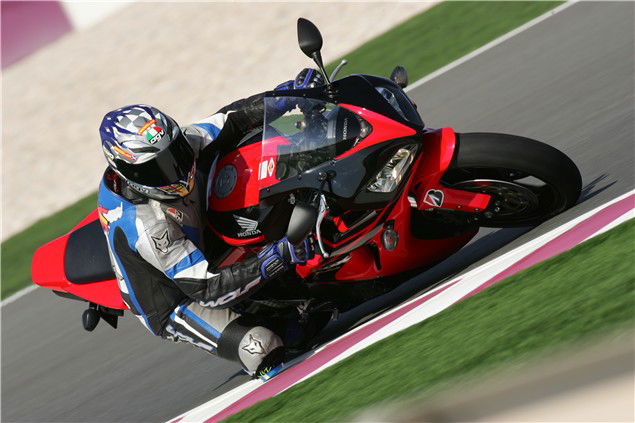
Should you buy a 2006 Fireblade CBR1000RR?
So it's time for the crunch. Is the '06 Fireblade going to knock the GSX-R1000 off the top spot? If I was going to take one out of all the 1000s to the south of France or Spain it'd be the Honda, simply because the riding position is the most comfortable.
Compared with the old model? You could argue that some of the changes, especially to the gearing, could be done to your current bike easily enough, so there's no need to upgrade to a new one. But the chassis alterations do make a subtle difference, and the '06 Blade is definitely a much better track bike.
Better than the GSX-R1000? Probably not, but I'd say riders would be less intimidated by it. What will be interesting is how the Blade gets on in Superstock racing. Will the changes be enough to notch up a few wins?
Small but significant chassis changes have made the Fireblade sharper on track without losing any of its user friendliness. The gearing change has given some extra punch and the look is fresher.
2006 Fireblade CBR1000RR specs
- Price: GBP 9,000 otr (tbc)
- Performance: 170mph
- Power: 170bhp @ 11,250rpm
- Torque: 85ft/lbs @ 10,000rpm
- Engine: 998cc, liquid-cooled, DOHC, four-stroke, four-valves per cylinder, inline-four
- Seat height: 831mm
- Dry weight: 176kg
- Bore x Stroke: 75 x 56.5mm
- Compression ratio: 12.2:1
- Transmission: six-speed
